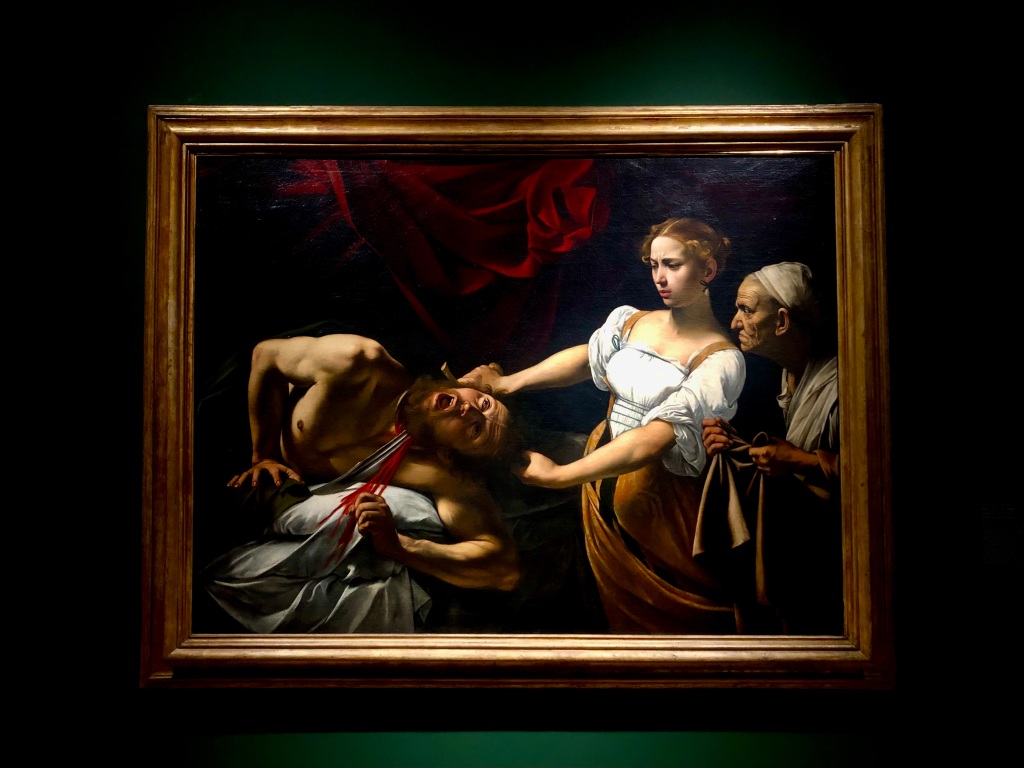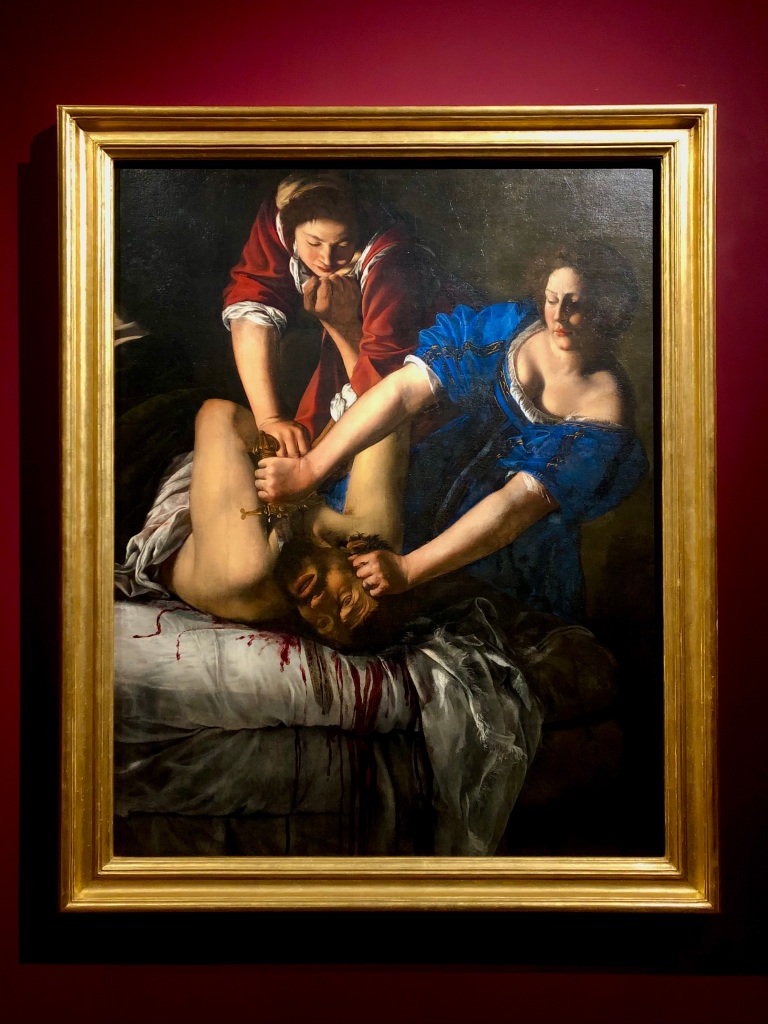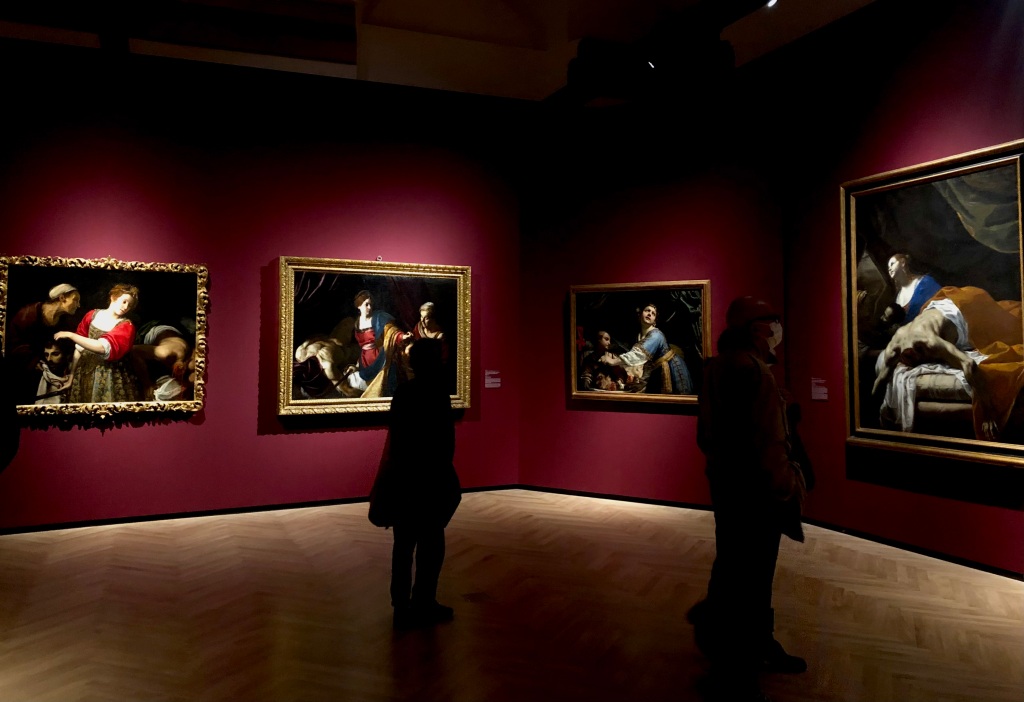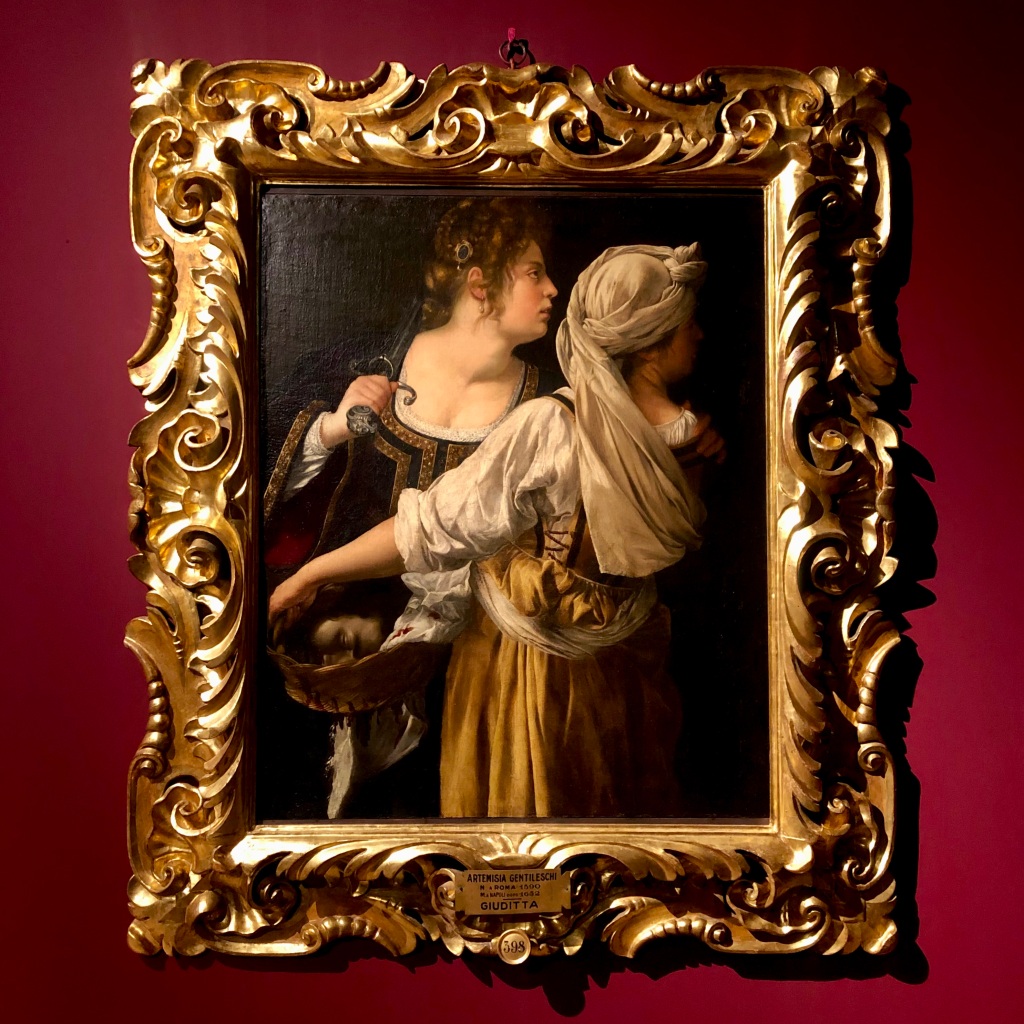Anger is a difficult emotion to discuss, and an even more difficult one to feel. At my New Moon circle this month, we probed into our feelings around anger, and some shared that anger is always a mixed emotion—appearing alongside sadness or grief or shame, but never on its own.
I felt just the opposite. For me, anger is all-encompassing. A roaring inferno that burns all else away until I’m nothing but my anger. It’s heartless. It can be cruel. Needless to say, I don’t like being angry.
But keeping anger buried is no solution either. Like banked coals it smolders, ready to catch and spread at the least provocation.
And sometimes, it can be useful.

You probably need to be pretty angry to sever a man’s head, no matter how much he deserved it. | Caravaggio. Judith Beheading Holofernes. c. 1600, Gallerie Nazionali di Arte Antica – Palazzo Barberini, Rome. | Photo © Rebecca Glazer 2021
Rosh Chodesh Tevet is also traditionally celebrated as Chag Ha’Banot or Eid al-Bnat, the Festival of the Daughters. In many Mizrahi Jewish communities, generations of women gather together on this day to share blessings, gifts, and food, and in recent years, celebrations in similar spirit have begun spreading across the Diaspora. In particular, many of us have found inspiration in the tradition of sharing the story of Judith for the way it reframes the story of Hanukkah through the perspective of a woman—and her anger.
Judith had plenty of reason to be angry. Her home and her faith were under attack, and the male leaders of the Jewish community seemed unprepared to fight back. So she took matters into her own hands, visiting the tent of the general Holofernes under the pretense of seduction. She fed him cheese and other salty foods, and when he complained of thirst, she quenched it with wine until he fell asleep, drunk. Then she took his sword and removed his head.
Though the story of Judith recorded in the Christian Bible sets the tale in the 6th century BCE under the siege of Nebuchadnezzar, Jewish oral tradition holds that Holofernes was a general of Antiochus, the Seleucid Greek ruler against whom the Maccabees also fought. Regardless of which history is “true” (if either), Judith’s story is told during Hanukkah for the ways in which its themes resonate with the holiday: an oppressive force bent on assimilation and control was turned aside by the bravery of a rebellious few.

Notice how the composition shifts the focus to Judith’s face in this version, painted by a woman. Compared to Caravaggio’s, Holofernes is limp, passive, almost dead. | Gentileschi, Artemisia. Judith Beheading Holofernes. c. 1612, Gallerie Nazionali di Arte Antica – Palazzo Barberini, Rome. | Photo © Rebecca Glazer 2021
But I wonder if there’s another reason her story resonates so deeply with women across so many continents and generations. So often we’re told that our anger is frivolous, silly, unworthy of attention. Or, if we dare to reveal the true depth of our rage, we become immediately hysterical, irrational, and once again unworthy of serious consideration. It’s refreshing, then, to see a heroine celebrated for taking her anger—justified, righteous anger—and turning it into action.
It was a coincidence that the exhibition “Caravaggio and Artemisia: The Challenge of Judith” opened while we were in Rome, two days before Hanukkah began—we hadn’t even heard about it until we saw a poster in a Metro station. But we took our good fortune in stride and went to see the curated exhibit at Palazzo Barberini, in which were hung dozens of portraits of the exact same scene: Judith beheading Holofernes.

Imagine this, times ten. It was a lot of severed heads. | Photo © Rebecca Glazer 2021
Among all the variations—each artist made slight adjustments to the composition and style—one stood out. Almost all the others had been painted by men, several of whom had found enough kinship with (or at least sympathy for) Holofernes that they painted his face as portraits of their own. One artist went so far as to paint Judith as his lover, and her handmaid as the lover’s mother.
But Artemisia Gentileschi had no sympathy for Holofernes. She did not give him agonizing cries or glorious raptures in death, only a shadowed face and weakened arm about to fall limp. Her focus is all on Judith.
As a teenager, Artemisia survived rape and abuse at the hand of a fellow painter. Perhaps because she came from a wealthy and well-respected family, her father was able to press charges, and the man was eventually convicted—but not before the judge required Artemisia to be tortured with thumbscrews to prove her testimony. The man’s sentence was annulled after two years, and Artemisia spent the rest of her life painting women who suffered by (or took their revenge on) men. Danaë, Lucretia, Corisca, Cleopatra, Susanna, Esther, Yael, Bathsheba, Delilah, Lot’s daughters, Mary Magdalene, a host of female martyrs… and Judith.
Aremisia painted six separate variations of Judith over the course of her life, some featuring Holofernes, but several focused solely on Judith and her handmaid. In at least one, she seems to have painted Judith’s features as her own.

Scholars disagree on whether this is a self-portrait, but it is based on her father’s painting of the same composition. Artemisia has moved Judith’s hand from the handmaid’s left shoulder to her right. | Gentileschi, Artemisia. Judith and her Maidservant with the Head of Holofernes. c. 1615, Gallerie degli Uffizi, Palazzo Pitti, Galleria Palatina, Florence. | Photo © Rebecca Glazer 2021
Anger in my life is rarely as clear-cut or as righteous or as justified as it might have been for Artemisia or Judith. More often it’s petty, triggered by minor slights or salt in old wounds. Other times it’s diffuse, mixed with despair, burning at the unfairness of growing up on a dying planet.
But if there’s one gift anger brings, it’s clarity. Anger tells us where we’re hurting. Anger can tell us—if we’re listening—what we need to do about it.
Anger is not the same as hate; anger is what leaps to the defense of those we love. And so anger can mean action, if we let it. It can be the fuel that drives us to right the scales of justice—in our personal lives, in our society, and across the globe.
May our anger fuel our desire to make this world a better, fairer place—and may we, unlike Judith, not need swords to do so.
